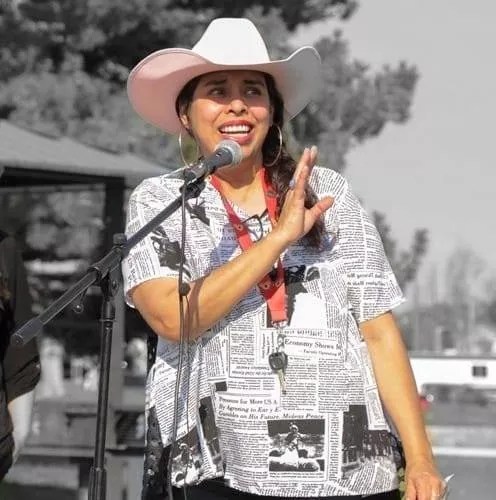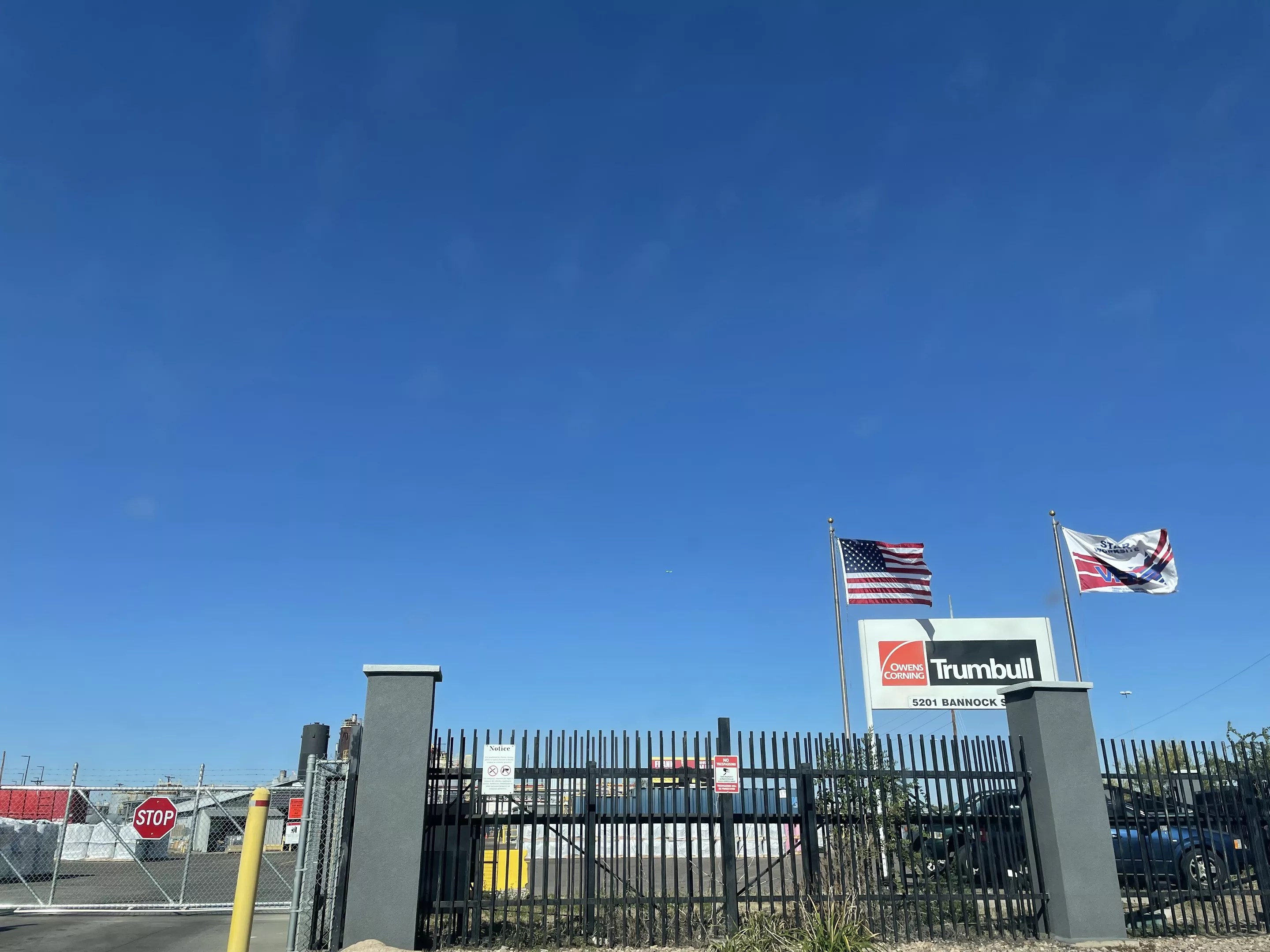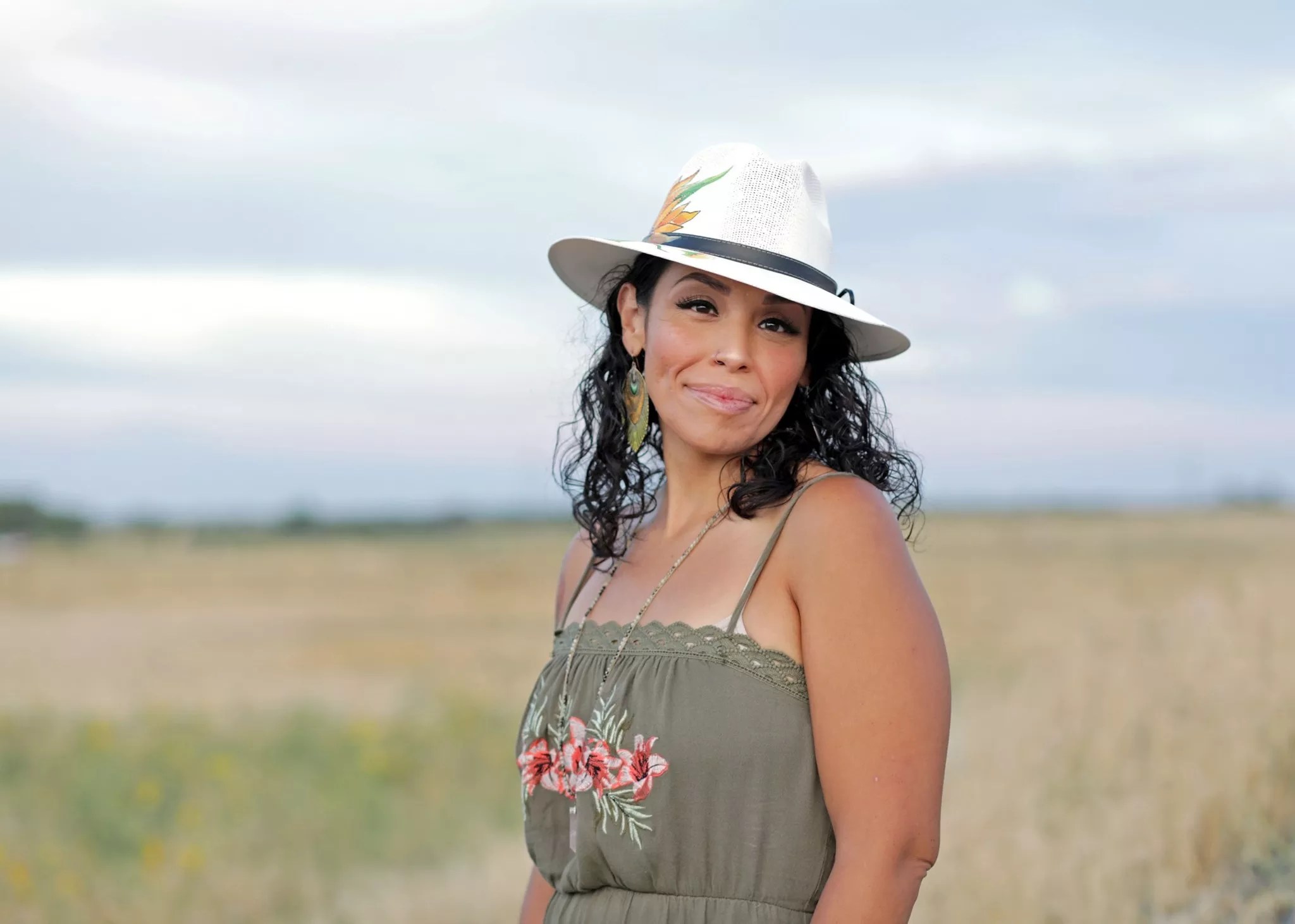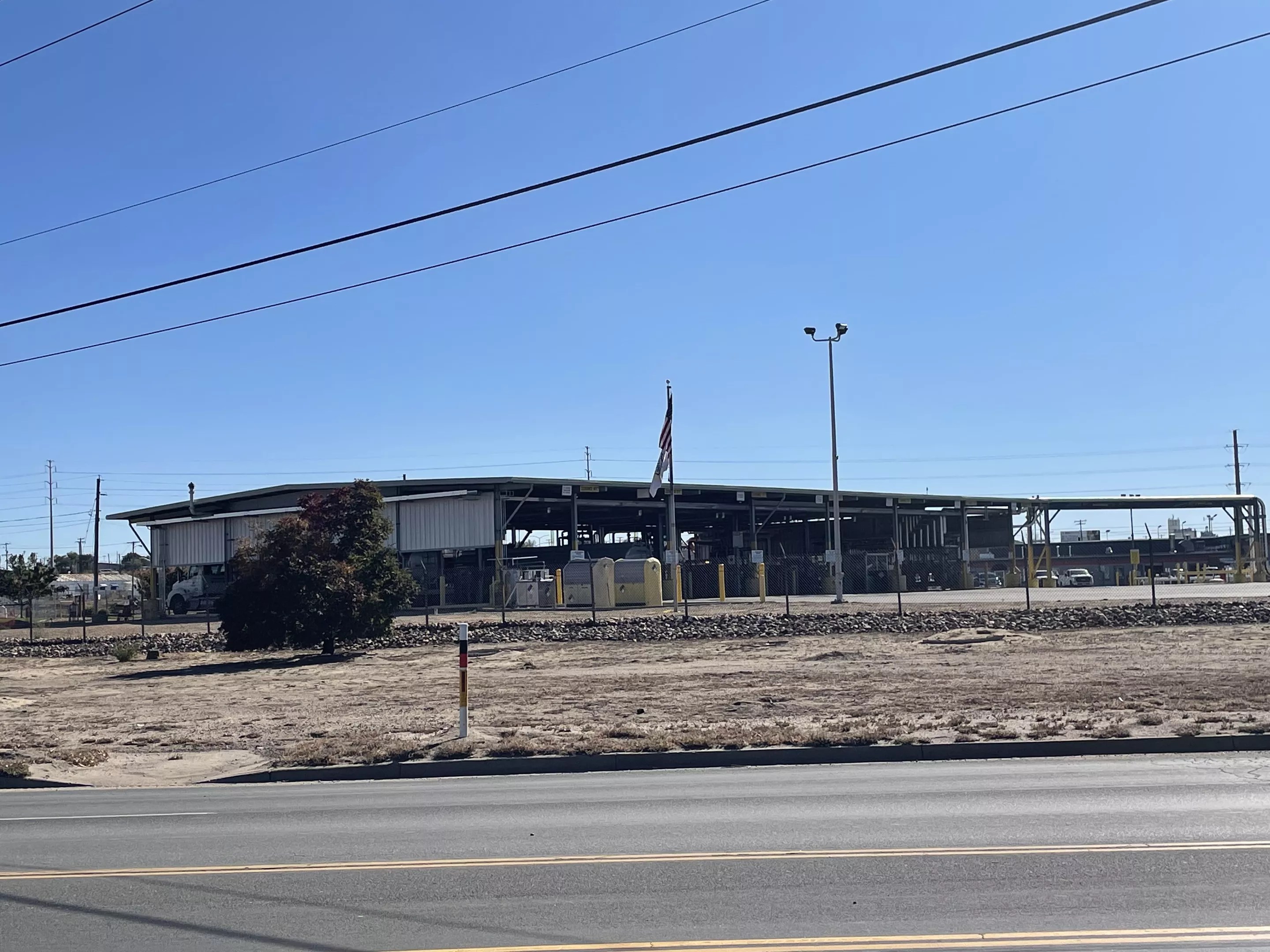
Anthony Camera

Audio By Carbonatix
If there’s a nasty smell in your house, you track it down and eliminate the source. But what if, as soon as you get rid of it, another one that’s just as bad appears? That’s how Lucy Molina describes living in Commerce City.
Molina ran for Commerce City’s City Council largely because of her experience as an activist trying to call out Suncor Oil Refinery. Her battle to push regulators to pay attention to environmental harm caused by the state’s only oil refinery gained national attention, and earlier this year, state air-quality regulators fined Suncor for releasing unsafe levels of toxic chemicals into the air. But Molina felt that it took too long for the state to impose fines that weren’t harsh enough, and she hoped that by joining city council, she would be able to get even tougher on pollution in her community.

Lucy Molina grew up in Elyria-Swansea.
Lucy Molina Facebook
Molina, who is Mexican-American, and fellow candidate Renée M. Chacon, who is Diné, Xicana and Filipino, argued during their campaigns that Commerce City power brokers were on the side of Suncor and polluters like it rather than on the side of the historically disenfranchised community. Commerce City is 49.2 percent Hispanic or Latino, according to the U.S. Census Bureau; Adams County, which includes Commerce City and other areas northeast of Denver, is 40.8 percent Hispanic or Latino. In contrast, Denver is 29.9 percent Hispanic or Latino.
“We’re in the heart of it, right by all the polluters, so for me it’s an ongoing fight for the right to live,” Molina says. “If we don’t take action, we’ll have no world left to fight for.”
Both Molina and Chacon lost in an election with a relatively small turnout: just 31 percent of registered voters. By the latest tally, Molina got 29.97 percent of the vote compared to Oscar Madera’s 46.91 percent, losing by just 208 votes; Chacon tallied 29.51 percent to Rick Davis’s 36.8, losing by 173 votes.
Molina and Chacon plan to keep fighting, though, and continue to do the work they’ve done as activists, including attending government meetings and organizing rallies to let people know how local governments allow polluters to harm the area. Molina is already out knocking on doors to tell residents about the proposed Interstate 270 expansion, how it might impact them and what they can do to have a say in the process. For her, education is the first step. That’s why she worked so hard to publicize Suncor’s role in contaminating the neighborhood.
Although Suncor is the best-known culprit, other polluters in the area around north Denver have done just as much damage, or more.
According to the Environmental Protection Agency, 119 facilities in Adams County are currently in violation of one of four federal laws meant to protect the environment and the people living in it: the Clean Water Act, the Clean Air Act, the Safe Drinking Water Act and the Resource Conservation Recovery Act. In Denver zip codes 80216, 80022, 80640 and 80229 – which includes Globeville and Elyria-Swansea, where Molina grew up – there are 123 current violators.
Owens Corning Trumbull Asphalt in north Denver and the Phillips 66 terminal in Commerce City are two of the companies that make the EPA’s list. Both have significant violations, including failure to report data and violation of the Clean Water Act; both emit more pollutants into the air than Suncor.
According to data from the EPA’s Toxic Release Inventory Program, which relies on self-reporting from businesses, in the past three years Suncor has released over one ton of benzene, a chemical that causes health issues ranging from headaches to cancer. The refinery has also released 484,000 pounds of nitrate compounds that impact the cardiovascular system.
Owens Corning, a 100-year-old asphalt plant, has released 1.95 tons of benzene over the past three years, nearly double Suncor’s amount. The company annually releases 1.07 tons of hydrogen sulfide, which causes problems with the respiratory and cardiovascular systems.
“Owens Corning has sophisticated control devices in place to limit our air emissions within the laws of the Environmental Protection Agency,” the company says, noting that benzene and hydrogen sulfide “are common for all petroleum-based products, and the company is actively working to reduce our outputs here even further. Those details quickly become very technical, but we look forward to reporting the results as we have them. Although we are well within compliance standards, our proactive projects/process improvements reflect our stance as a company.”

Owens Corning Trumbull Asphalt is a major polluter in north Denver.
Catie Cheshire
The Phillips 66 terminal is just down 56th Avenue from Suncor. Commercial trucks flood its six stations each day as they stop for gas on their way to distribute goods across the country. The terminal, and the trucks driving through it, release contaminants though oil from a pipeline that originates in Texas. According to the EPA, the Phillips 66 terminal released nearly five tons of chemicals into the environment from 2018 to 2020, including over a ton of benzene. And that’s not counting the emissions from the trucks passing through.
“At Phillips 66, we set high safety standards for all our operations. Our performance metrics continually track our progress and success as a responsible energy provider and invested partner in the communities where we live and operate. Our core safety value means we are committed to working together to help protect communities,” Phillips 66 says in a statement.
Four city blocks away from the terminal is Pioneer Park, complete with Paradice Island Pool and baseball fields that attract kids from around the neighborhood.
Katie Dickinson, an assistant professor of environmental and occupational health at the Colorado School of Public Health, is currently studying environmental justice and oil and gas development in the state. She’s partnering with organizations like GreenLatinos, a nonprofit coalition of Latinos committed to addressing environmental issues, to identify businesses that are major polluters.
“We’re not looking to prove that one company was intentionally racist and picked a certain spot solely out of racial animus,” she explains. “Instead, what we’re really trying to look at is what are the systems and the policies that are in place that lead to a situation which is well-established, which is that communities of color and low-income communities bear a higher burden of environmental costs than other communities.”
The spotlight on Suncor is justified, she says, but might be letting other polluters slip under the radar.
Adams County Commissioner Eva Henry agrees. “It is just the structure of Adams County,” she says. “It’s unfortunate, but at least now we’re aware of it and we’re keeping our eye on it, where before, people just…let them do whatever they wanted to do.” As a result of that attitude, 80216 was labeled the worst zip code in the country for environmental risks in 2017, according to ATTOM Data Solutions, which monitored EPA Superfund sites and other polluters to make that determination.
“The structural drivers that likely led to that assessment that this is the most polluted area have not been, in any way, shape or form, sufficiently addressed,” Dickinson says. “Whether or not there’s another zip code somewhere in the U.S. that would edge that community out for most polluted, I think it is indisputably unacceptably polluted, and it’s really imperative that we take action to address that.”
Although Molina says she long recognized that climate crisis was a problem, she didn’t feel a strong responsibility to take personal action against pollution until she saw the impacts on her own children. “When I had my children, I was like, ‘Oh, it hurts now,’ because now I’m fighting an invisible enemy,” she says. Her son regularly gets bloody noses, and her daughter gets migraines. Her grandmother, who lived in the area, passed away from leukemia, which is often caused by benzene, according to the Centers for Disease Control.

Renee M. Chacon isn’t a stranger to activism. She’s been fighting for various causes her whole life.
Renee Millard Chacon for City Council Ward 3 Facebook page
Chacon is the co-founder of Womxn From the Mountain, which promotes cultural enrichment for underserved communities. She decided to run for office to create a better path for her children, who have been protesting and praying since “before they were out of the belly,” she says. For over three generations, she adds, her “spiritual family” has owned the Native American Church, a private space for sacred ceremonies on Dahlia Street, right under the haze from the Purina factory. Although council may not be her next step, she wants to continue fighting for the Indigenous community in the area.
A recent study conducted by the University of Colorado Boulder found that polluted air has psychological as well as physical impacts. People living in areas with odorous air reported lower satisfaction with how their lives turn out, their standard of living and their recent enjoyment of life.
Molina says that she knew many community members who committed suicide, and that she herself experiences increased frustration with the world when she walks outside and smells the stench caused by emissions from Suncor and other polluters. “If I put a sign there with a baby and a kid playing in the park saying that you’re getting poisoned – the air that you’re breathing is poisoned- I think people will stop and see what’s going on,” she says, adding that she encourages people to think of the polluters collectively rather than focusing on specific culprits.
One reason for this is the difficulty in collecting information related to individual businesses. That’s because much of the data, including what’s released by the EPA, relies on self-reporting. According to Becca Curry, Colorado policy counsel for the Earthjustice Rocky Mountain Office, Owens Corning regularly reports different levels of emissions for various toxins to state and federal governments.
The data also lags, with reports from the previous year not due until July. Then it takes time for state and federal agencies to comb through and upload the information to publicly available databases. Owens Corning, for example, installed water recycling equipment in 2019 to eliminate all wastewater discharges and bring it into full compliance with the Clean Water Act, says a spokesperson. However, the public still doesn’t know the results of those changes nearly two years later because of the delay in data reporting.
Dickinson says discrepancies in the data, and difficulties accessing it in the first place, can discourage people from taking action. “How can people make informed decisions about what we as a society want to allow and not allow in our neighborhoods when we don’t even have any of this information to make those choices?” she asks. “It seems like that should be the goal of a functioning society – to take care of the people who are living in that society. Part of doing that would be collecting information about what are the impacts of different choices that we make.”
Curry suggests that community-based monitoring rather than industry reporting is an important tool. As a result of the Suncor fines, local nonprofit Cultivando received funds to build an independent air-monitoring network in Commerce City, for example.

At the Phillips 66 terminal trucks cycle through constantly, even in the middle of the afternoon.
Catie Cheshire
Denver is building a similar network with the Love My Air program, managed by the Denver Department of Public Health and Environment; funding came from a 2018 Bloomberg Mayors Challenge grant that focuses on innovation, and the program equips public schools with sensors to detect fluctuations in air quality along with information about what to do to mitigate harm when air quality is poor.
Michael Ogletree, technical services air quality program manager with the Department of Public Health and Environment, says the program is unique to Denver because the data is automatically updated on a nightly basis and takes into account local weather using an algorithm developed in partnership with the University of Colorado to ensure accuracy. The program currently works with forty schools, including around twenty in north Denver, Ogletree says. Since anyone can access the data online, Ogletree encourages people curious about the air quality in their area to find a local school.
In Adams County, the commissioners are implementing some community monitors starting this year, with plans to add more. “After dealing with gas and oil, I don’t trust anybody to be self-reporting,” Henry says. Henry’s belief is backed up by fact: As reported by the Colorado Sun in March, many companies, including Phillips 66, adjusted their reported emissions to be under the threshold of the Colorado Legislature’s proposed regulations.
While increased community monitoring and legislative victories like Environmental Justice Disproportionate Impaced Community, which was passed during the last legislative session and pledges to reduce greenhouse gases and invest in impacted communities, are important developments, Chacon is ready for more action. “Definition means nothing without implementation,” Chacon says. “If someone says they love you, it doesn’t mean anything until they act on it.”
California recently switched its air-quality regulations to use health-based standards in order to determine what amount of which pollutants is appropriate. Now the state issues permits based on reported pollution in the area, considering what other businesses are doing to reflect cumulative pollution rather than viewing the impact of each business on a standalone basis. “We need to someday switch to a health-based approach where instead of focusing on the facilities, we’re focusing on the community,” says Curry, “and we’re setting an acceptable level of, for example, benzene for the community and we’re basing all regulation and permitting off of that level that we’ve determined to be safe.”
Henry agrees that health-based permitting would solve some problems. Adams County recently started sending inspectors to see if businesses are following environmental regulations at random, but there hasn’t been time to determine how effective these checks are, she says.
In the meantime, activists continue to push education. Ean Thomas Tafoya, the Colorado state director of GreenLatinos, says his group works to inform the public, then encourages people to join coalitions that are already doing the work, contacting elected representatives to advocate for such changes as community monitoring and cumulative emissions standards.
Tafoya also recommends experiencing the impact of pollution in a certain area like north Denver. “Go on an early morning when all the diesel trucks turn on and you can taste the metal in your mouth,” he suggests. After all, the pollution in north Denver and Commerce City doesn’t just affect those areas – and it’s not just caused by businesses based there. While the Interstate 70 expansion project has spurred companies like Owens Corning to produce more asphalt, the expanded road will be used by anyone trying to get to the airport as well as across town. The Phillips 66 terminal accommodates trucks carrying goods that many people in Denver use, including packaged meat, dairy, produce and pet food.
Most of those people don’t have to live near the terminal, though.
“We have to see this as a united problem. It’s not Commerce City’s problem only. It’s everybody’s problem,” Molina says. “We have to make ourselves uncomfortable sometimes to protect our planet and our children.”
Although the challenge is immense, Chacon isn’t intimidated. “The first thing you do is, don’t despair,” she says. “Then reimagine. I need you to reimagine yourself void of colonial violence and reimagine yourself void of environmental violence. Everything can be restored as long as you put in the work to do it. If you’re taught off the bat to despair, if you’re taught off the bat that it’s too much, that’s how people are going to take your money and leave you to die.”
Chacon, Molina and others will keep working until even the most difficult-to-find smells are eradicated from their homes. Losing one election won’t stop them.